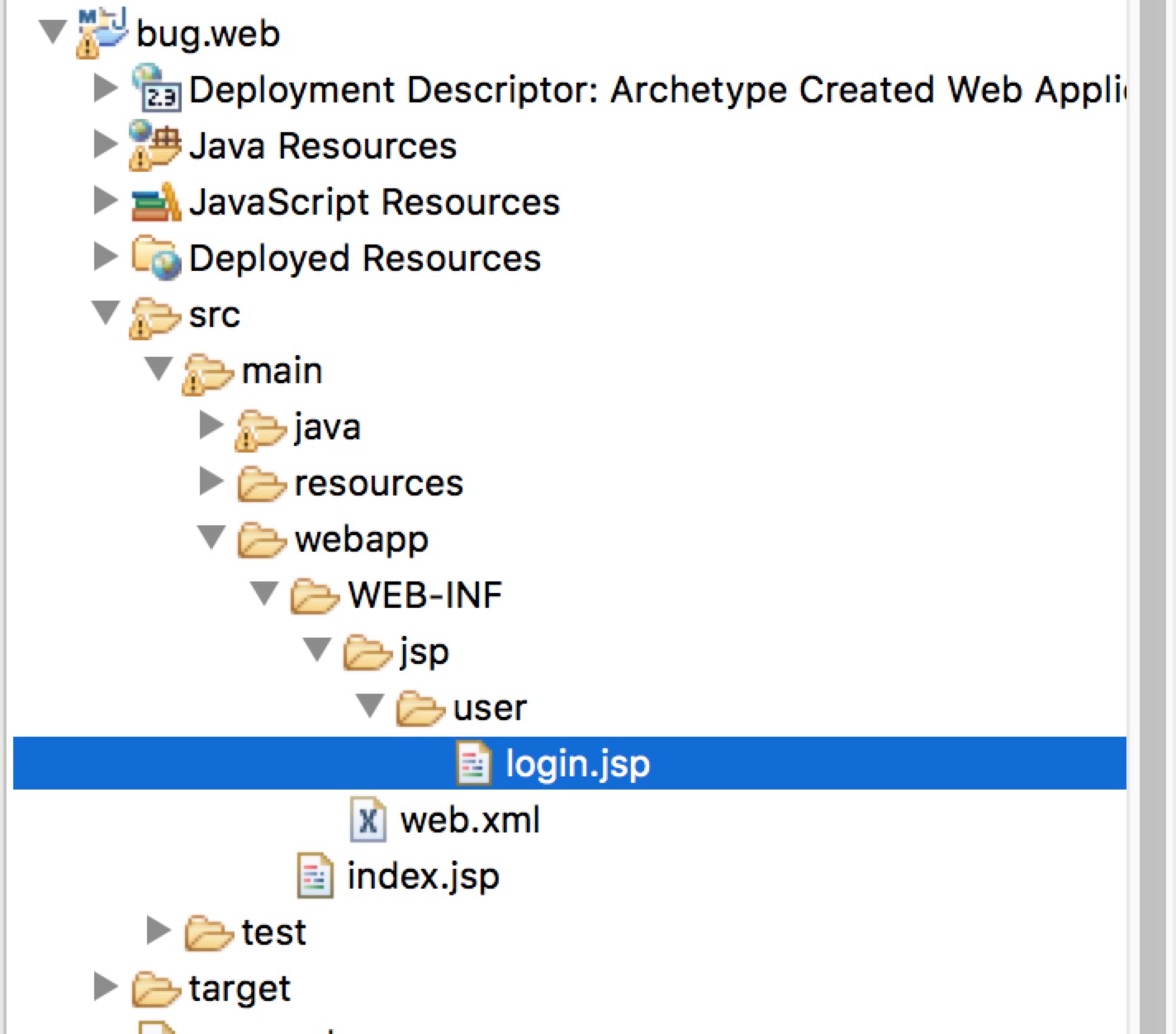Spring+Spring MVC+Mybatis+Maven搭建多模組專案(二)
基於第一篇文章《Spring+Spring MVC+Mybatis+Maven搭建多模組專案(一)》的基礎上,寫一個完整的示例,從頁面到Dao層的整個過程
1、先在bug.model模組下建立com.bug.model.user包,在包中建立UserVO物件
package com.bug.model.user;
public class UserVO {
private String userId;
private String userName;
private String password;
public String getUserId() {
return 2、在bug.dao模組中建立com.bug.dao.user包,在包中建立IUserDao介面
package com.bug.dao.user;
import org.apache.ibatis.annotations.Param;
import com.bug.model.user.UserVO;
public interface IUserDao {
void addUser(@Param("user")UserVO user); 為了方便,同時在com.bug.dao.user包中建立IUserDao介面對應的Mapper檔案IUserDao.xml,其實在applicationContext.xml檔案中也已經指定了Mapper檔案的存放位置了
<?xml version="1.0" encoding="UTF-8" ?>
<!DOCTYPE mapper
PUBLIC "-//mybatis.org//DTD Mapper 3.0//EN"
"http://mybatis.org/dtd/mybatis-3-mapper.dtd">
<mapper namespace="com.bug.dao.user.IUserDao">
<insert id="addUser" parameterType="com.bug.model.user.UserVO">
insert into user_t
(
user_id,
user_name,
password
)
values
(
#{user.userId,jdbcType=VARCHAR},
#{user.userName,jdbcType=VARCHAR},
#{user.password,jdbcType=VARCHAR}
)
</insert>
</mapper>3、在bug.service模組中建立com.bug.service.user包,在包中建立IUserServicer介面
package com.bug.service.user;
import com.bug.model.user.UserVO;
public interface IUserService {
void addUser(UserVO user) throws Exception;
}
我的設計是把Service介面及其實現都放到bug.service模組中,因此在user包下再建立impl子包,在子包中建立IUserService介面的實現UserServiceImpl,並在介面中呼叫Dao層介面
package com.bug.service.user.impl;
import org.springframework.beans.factory.annotation.Autowired;
import org.springframework.stereotype.Service;
import com.bug.dao.user.IUserDao;
import com.bug.model.user.UserVO;
import com.bug.service.user.IUserService;
@Service("userService")
public class UserServiceImpl implements IUserService {
@Autowired
private IUserDao userDao;
@Override
public void addUser(UserVO user) throws Exception{
userDao.addUser(user);
}
}4、在bug.web模組下建立com.web.controller.user包,在包中建立UserController控制層,用於響應頁面傳送過來的請求,並呼叫Service層的介面
package com.bug.controller.user;
import org.springframework.beans.factory.annotation.Autowired;
import org.springframework.stereotype.Controller;
import org.springframework.web.bind.annotation.RequestMapping;
import com.bug.model.user.UserVO;
import com.bug.service.user.IUserService;
@Controller
@RequestMapping("/user")
public class UserController {
@Autowired
private IUserService userService;
@RequestMapping("/login")
public String login() {
UserVO user = new UserVO();
user.setUserId("1");
user.setUserName("test1");
user.setPassword("123456");
try {
userService.addUser(user);
} catch (Exception e) {
e.printStackTrace();
}
return "user/login";
}
}
這裡返回的”user/login”,渲染器會自己匹配WEB-INF/jsp/user目錄下的login.jsp,
由於在spring-servlet.xml中已經限制掃描範圍,所有的控制層都必須放在com.web.controller包下,因此後繼增加的其他控制層都需要放到controller下面
另外spring-servlet.xml中的檢視解析器已經控制了以.jsp結果的檔案作為渲染頁面,並放在WEB-INF/jsp目錄下面,因此需要先在WEB-INF目錄下建立jsp資料夾,再在jsp資料夾中建立user目錄,在user目錄中建立login.jsp檔案,用於渲染頁面的請求
最後在位址列中輸入localhost:8080/bug.web/user/login驗證結果

